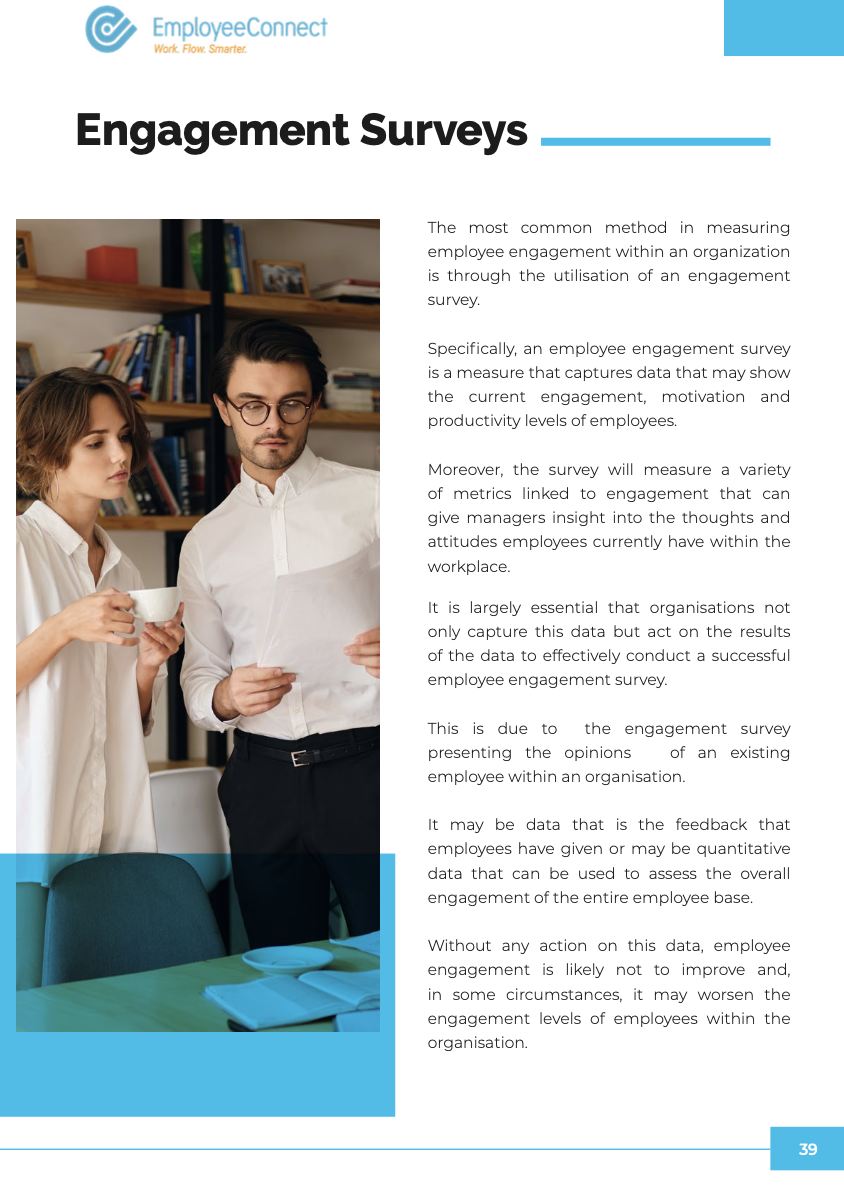Content Overview
Employee Engagement is one of the most significant elements of a business’s successful operations that Human Resources departments are constantly aiming to understand and achieve.
This eBook goes in-depth covering seven critical topic areas within employee engagement:

- What is Employee Engagement?
- The Science of Engagement
- The Psychology of Engagement
- Benefits of Employee Engagement
- The Role of HRIS in Employee Engagement
- Pillars of Engagement
- Engagement Surveys
Presented throughout the eBook are academic understandings and answers to the underlying questions that may be wondered by those who need to gain a further depth of knowledge into employee engagement.
Moreover, a major integration within the eBook highlighting how EmployeeConnect has provided clients with the most effective tools to develop employee engagement to an all-time high can be found.
Download the FREE eBook:
The Definitive Guide to Employee Engagement
Content Preview
Executive Summary
Employee Engagement is one of the most significant elements of a business’s successful operations that Human Resources (HR) departments are constantly aiming to understand and achieve. It is noticeable that an engaged employee offers a wide variety of workplace benefits to the business such as increased productivity, larger creativity, greater employee satisfaction and more profound and impactful teamwork to name a few benefits.
Although, it is worth noting that these benefits can only be achieved through a strong understanding of what makes employees engaged.
If HR managers try to increase employee engagement with minimal understanding of how to efficiently engage an employee, valuable time and resources may be lost.
Integral to achieving and developing effective and efficient employee engagement is a strong mindset for building trust, empowerment, support and integrity.
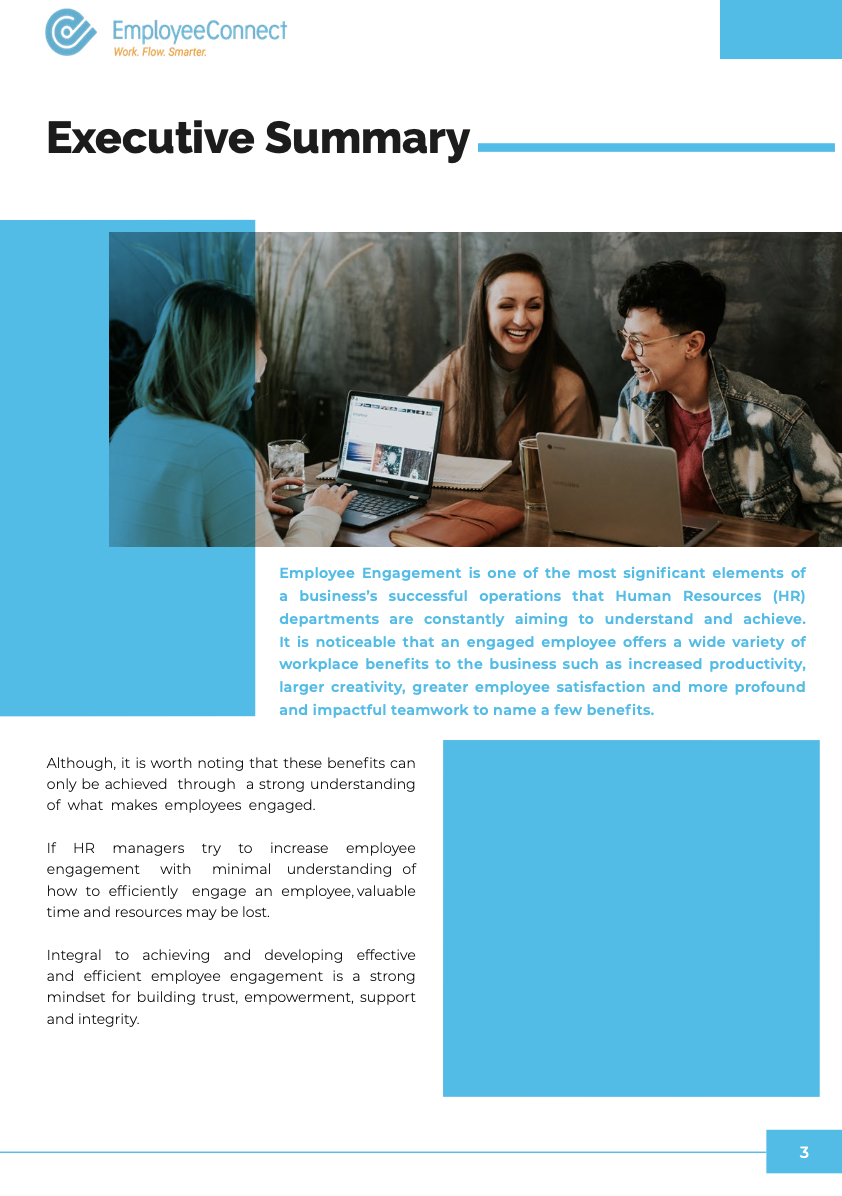
What is Employee Engagement?
With the ever-growing innovation of technology mixed with a fast-paced business environment employee engagement has become an integral area of focus that must be dealt with effectively. Although there is an ever-going question that remains to be answered and understood strongly, what exactly is employee engagement?
Employee engagement has been a widely investigated and conceptually large topic that has profoundly been researched within academic literature.
One of the earliest and most detailed academic descriptions of what specifically employee engagement was and what it involved, was provided by William Khan in 1990.
Khan described employee engagement as having an overall harnessing of organisations individual selves with their work roles in engagement that is physical, cognitive and emotional throughout practices. This meant that when engaged employees existed these three aspects are present throughout the work of the engaged employee.
Put simply, employee engagement is a largely motivational state that influences employees to work more passionately, productive and positively towards desired organisational outcomes.
Correspondingly, when an employee is engaged it is seen that the employee has largely increased energy, involvement and efficiency towards workplace tasks and activities presented.
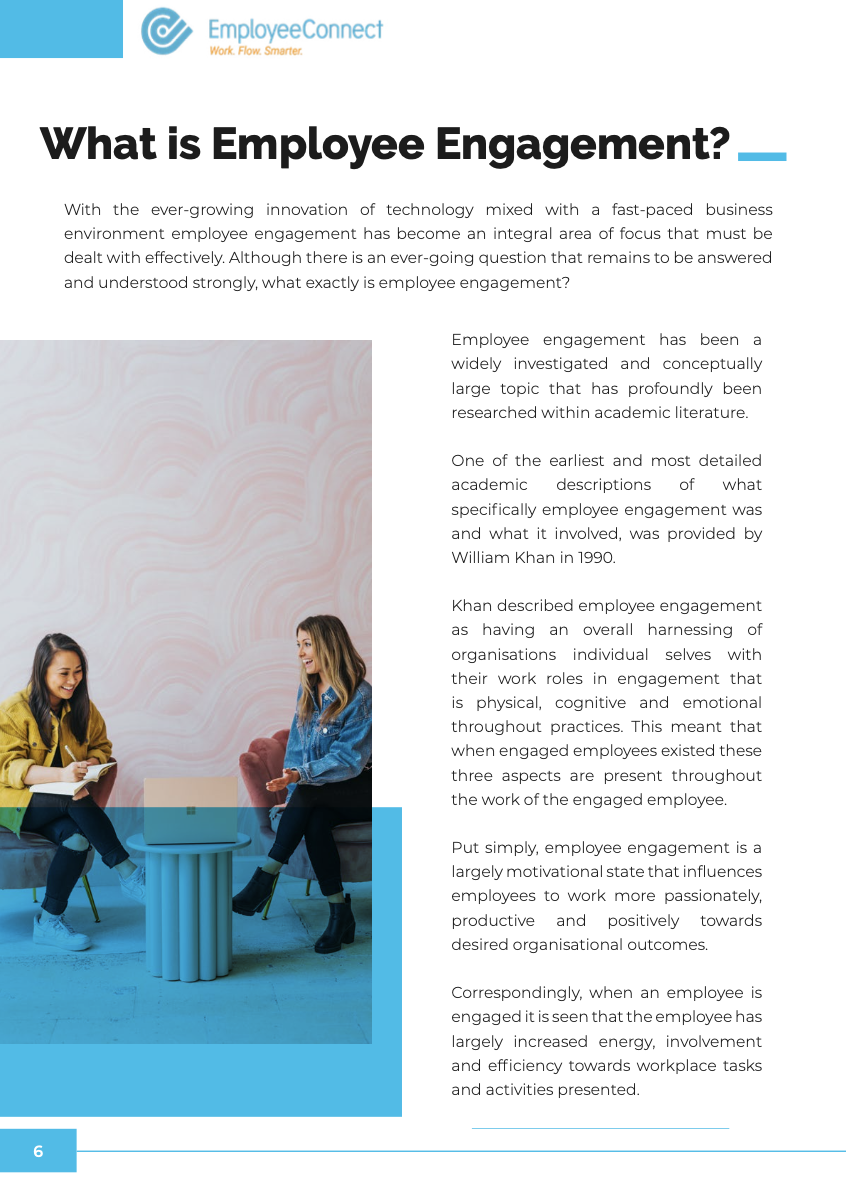
The Science of Engagement
Science plays a largely integral role in employee engagement whereby science explains a large aspect of ways in which humans are designed to act and behave in certain ways when living throughout their daily lives. More specifically, neuroscience plays a major role throughout the topic of employee engagement.
Neuroscience explores deeply into the study of the nervous system, utilising key information through the integration of chemistry, biology, physics and physiology to describe complex human behaviours.
Through neuroscience the ability to explicitly understand human emotions and cognitive functions is attainable, effectively helping individuals understand why and what someone is exactly experiencing or doing.
Specifically, an understanding of neuroscience helps organisations attain effective employee engagement as providing a means to understanding neural mechanisms that may be captured and enhanced to increase employee engagement.
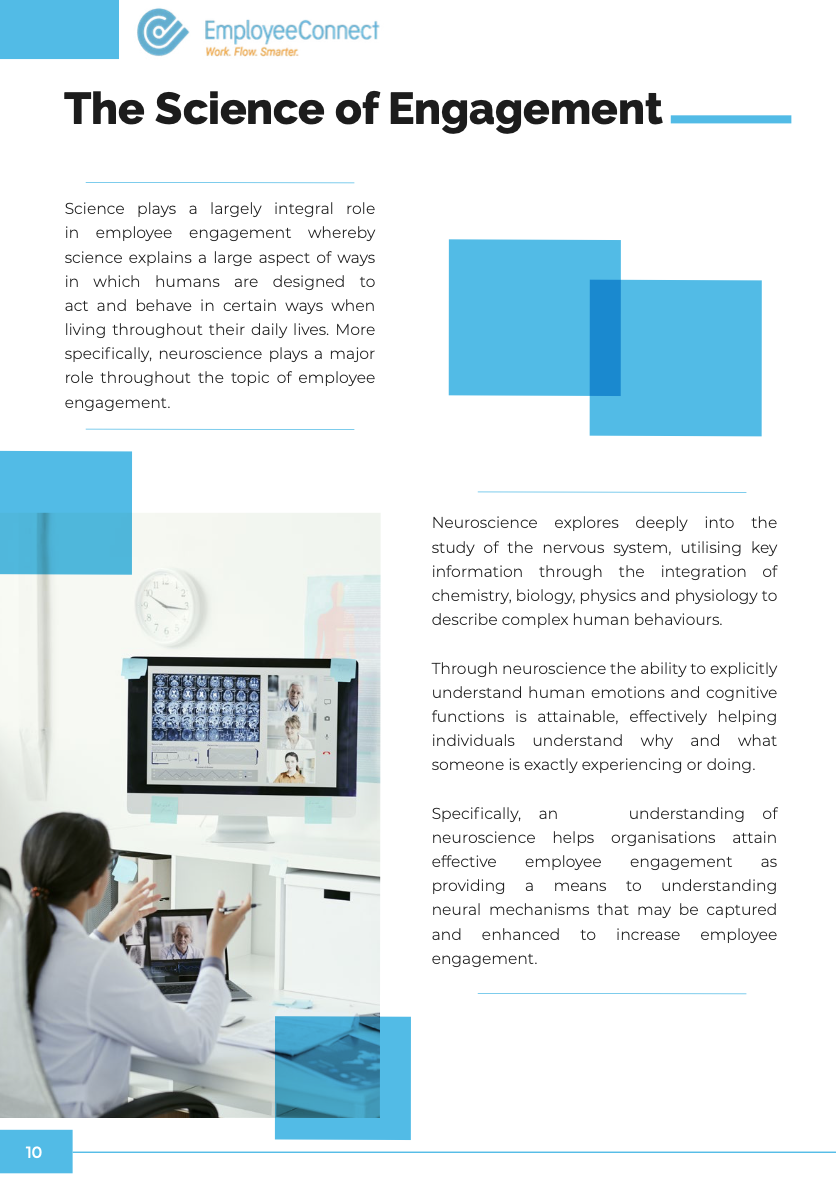
The Psychology of Engagement
Psychology has a dramatic role in understanding employee engagement through which psychology largely expands and gives reason to a variety of attitudes and behaviours in which individuals react and undertake throughout their daily lives. Psychology utilises a variety of academic definitions and theories to comprehend employee engagement to its full capacity.
Expanding literature of engagement and cognitive attachment to one’s role, it could be seen that there are three psychological conditions in which Kahn described that directly influence employee engagement.
The first being meaningfulness, meaningfulness is the value that an individual will set towards a particular goal which is efficiently benchmarked against personal conditions.
The second is safety, safety refers to fully showing and exhibiting oneself with no fear of negative consequences to self-image position and career.
Finally, the third condition is availability, availability refers to an individual’s belief that they contain adequate emotional, physical and cognitive energy to engage themselves within the workplace.
These three conditions must be understood and influenced by management to ensure employees within a workplace are fully engaged.
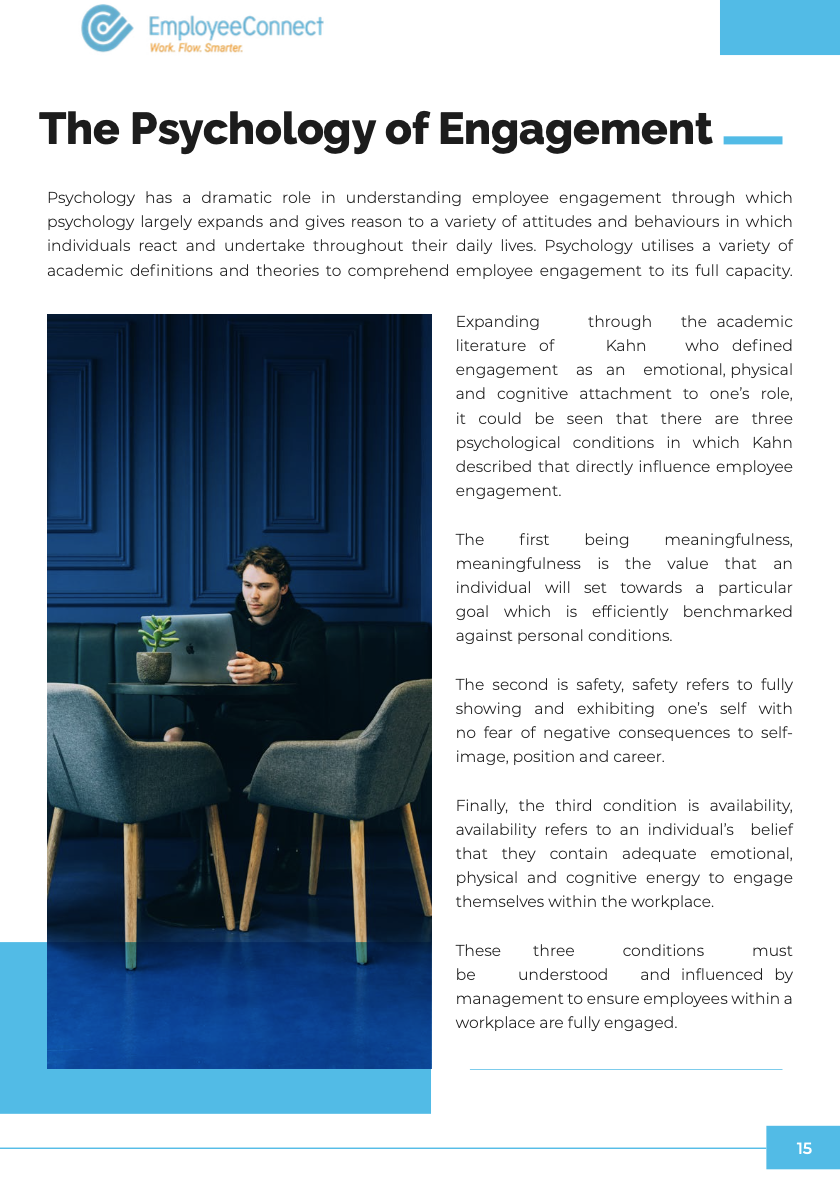
Benefits of Employee Engagement
During an organisation’s operation, it is largely common to effectively utilise various engagement tools to capture, analyse and enhance employee engagement.
These engagement tools include standard engagement surveys, pulse surveys, feedback data and communication tools to name a few.
Each of these tools has the power to drive engagement to employees, effectively increasing an employee’s likelihood to become engaged within the workplace.
This, in turn, leads to a variety of benefits that can be captured for the organisation.
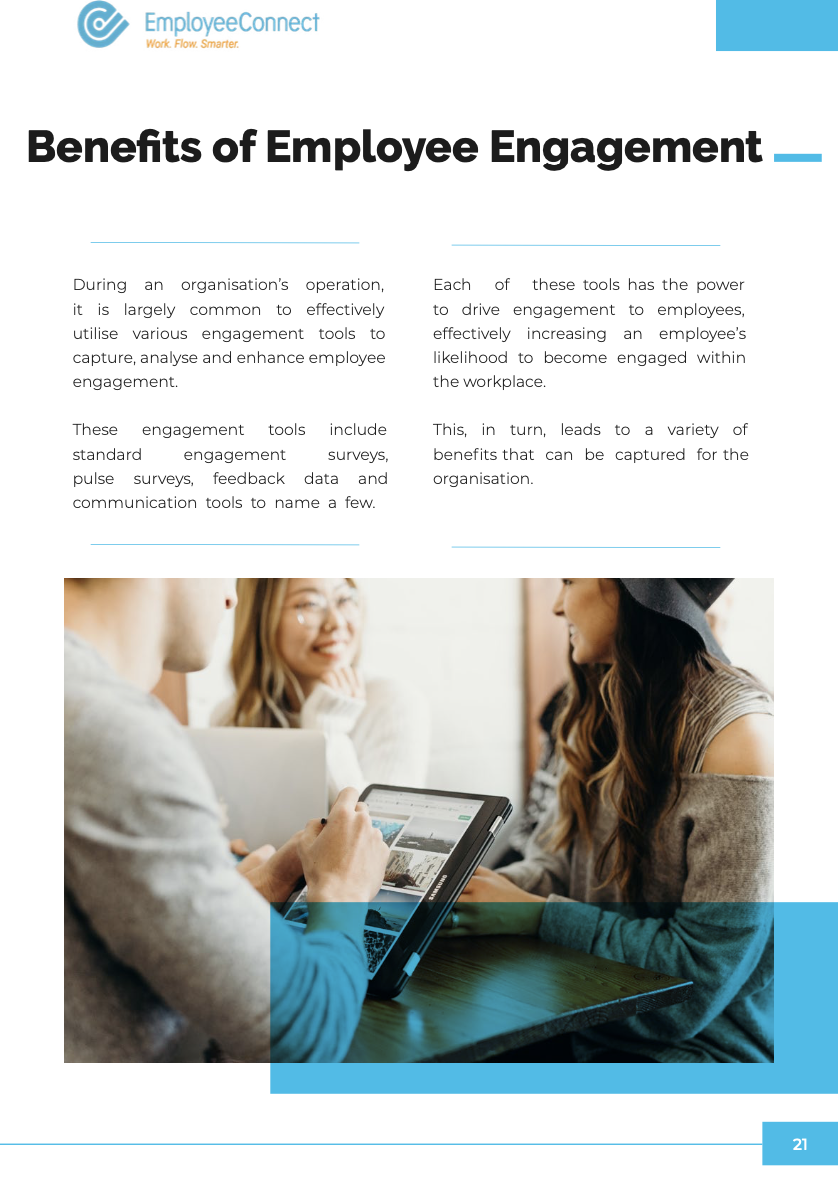
The Role of HRIS in Employee Engagement
A Human Resource Information System (HRIS) plays a largely critical role in achieving employee engagement.
HRIS effectively ensures that HR managements operations become much simpler and easier.
It is common to see that with HRIS HR managers are provided with the essential tools they need to ensure business activities are being effectively conducted all online, all with powerful automation that drives faster decisions and easier task management for the completion of workplace activities.
More specifically, HRIS effectively helps to ensure that employee engagement is being achieved within the organisation.
This is done whereby HRIS provides the measurement tools to effectively assess current employee engagement and work towards further engaging employees even more.
HRIS utilises functions such as engagement surveys, data capture, employee feedback and recorded interviews to effectively measure engagement levels of employees.
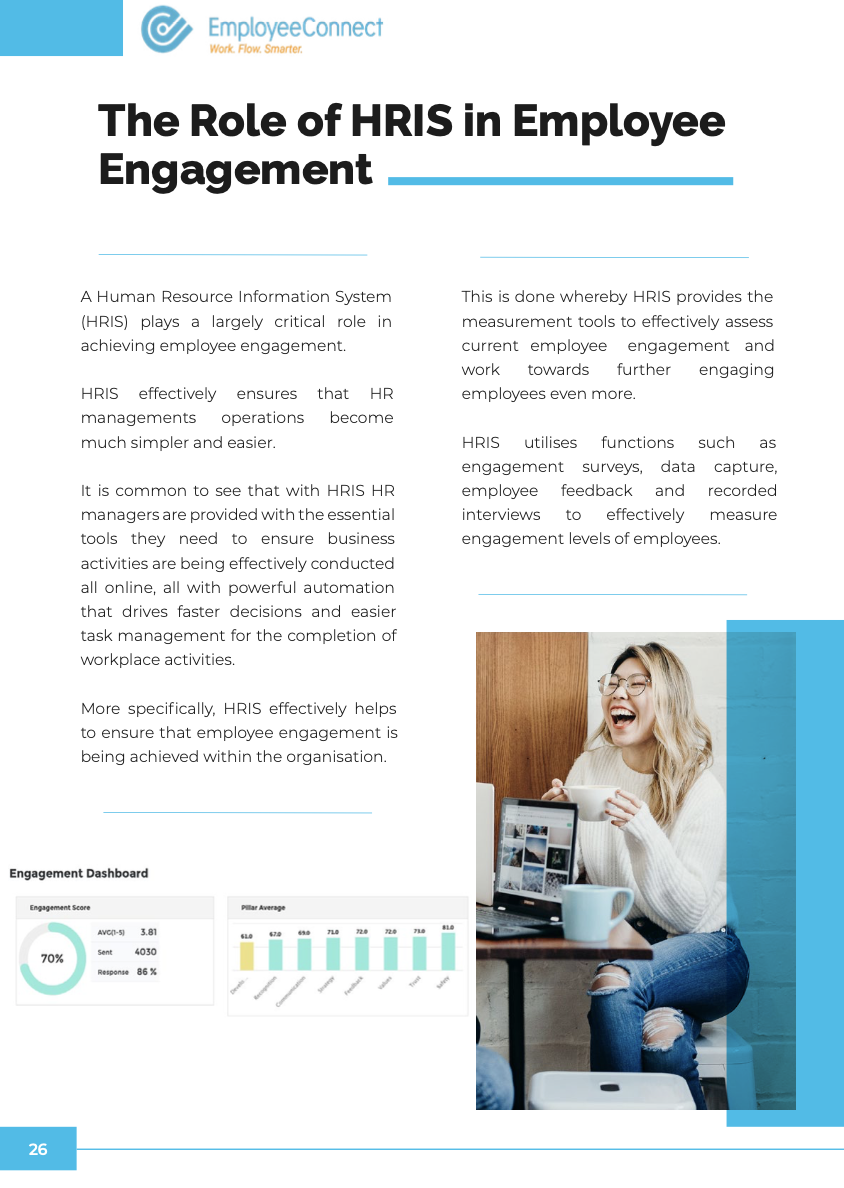
Pillars of Engagement
Engagement effectively encompasses various types of pillars that are essential in measuring how engaged an employee is within the organisation. Pillars act as metric standing points that work to effectively identify what core attributes will influence employees within a particular organisation and how these metrics may effectively influence employee engagement. If an employee effectively meets the engagement pillar, they are one step closer to being fully engaged within an organisation.
Various pillars may differ between organisations, this means that one organisation may find a particular pillar such as trust, impact and alignment as largely important to achieving employee engagement.
Although another company may find alignment is not so important and satisfaction is of more importance to achieving employee engagement.
In turn, the pillars are designed to be shaped to best meet the organisational perspective of what pillars best meets employee engagement.
Moreover, with these pillars, specific pillar survey questions may be asked to employees to capture data to help the organisation better meet employee engagement.
If the results of the survey are all positive across all organisational pillars, employee engagement has been successfully achieved.
If the results of the surveys are negative across the pillars, HR managers will then need to make informed decisions to better influence employee engagement.

Engagement Surveys
The most common method in measuring employee engagement within an organization is through the utilisation of an engagement survey.
Specifically, an employee engagement survey is a measure that captures data that may show the current engagement, motivation and productivity levels of employees.
Moreover, the survey will measure a variety of metrics linked to engagement that can give managers insight into the thoughts and attitudes employees currently have within the workplace.
It is largely essential that organisations not only capture this data but act on the results of the data to effectively conduct a successful employee engagement survey.
This is due to the engagement survey presenting the opinions of an existing employee within an organisation.
It may be data that is the feedback that employees have given or may be quantitative data that can be used to assess the overall engagement of the entire employee base.
Without any action on this data, employee engagement is likely not to improve and, in some circumstances, it may worsen the engagement levels of employees within the organisation.
